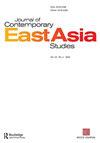The ASEAN Economic Community and the RCEP in the world economy
IF 1.4
Q1 AREA STUDIES
引用次数: 38
Abstract
ABSTRACT The Association of Southeast Asian Nations (ASEAN) has been leading economic integration within many structural changes in the world economy. ASEAN, established in 1967, has promoted regional economic integration since 1976. It started to work toward realizing the ASEAN Free Trade Area (AFTA) in 1992 and the ASEAN Economic Community (AEC) in 2003. ASEAN finally established the AEC at the end of 2015. The AEC is the most developed and advanced economic integration in East Asia. ASEAN is deepening the AEC for the next goal, AEC 2025. ASEAN also led East Asian cooperation initiatives, including ASEAN+3 and ASEAN+6, and ASEAN+1 FTAs. ASEAN proposed the Regional Comprehensive Economic Partnership (RCEP) and led the RCEP negotiations. Currently, rising protectionism and the US–China trade friction has great negative impacts on ASEAN and East Asia. Furthermore, the outbreak of COVID-19 has done great damage to ASEAN and East Asia. ASEAN is responding to the COVID-19 pandemic and strengthening the AEC steadily amidst growing protectionism and COVID-19 pandemic. The RCEP agreement was finally signed in November 2020. The RCEP is the first East Asian mega FTA. The RCEP has great meaning in ASEAN and East Asia. ASEAN secured ASEAN centrality in East Asian economic integration. The AEC and the RCEP will become more important amidst rising protectionism, and during and in the post-pandemic era.东盟经济共同体和RCEP在世界经济中的作用
东南亚国家联盟(东盟)在世界经济的许多结构性变化中一直引领着经济一体化。东盟成立于1967年,自1976年以来一直推动区域经济一体化。它于1992年开始为实现东盟自由贸易区(AFTA)和2003年东盟经济共同体(AEC)而努力。东盟最终于2015年底成立东盟经济共同体。东盟经济共同体是东亚地区最发达、最先进的经济一体化。东盟正在为下一个目标——东盟经济共同体2025深化东盟经济共同体建设。东盟还主导了“10 +3”、“10 +6”、“10 +1”等东亚合作倡议。东盟提出区域全面经济伙伴关系协定(RCEP)并主导谈判。当前,保护主义抬头,中美贸易摩擦加剧,给东盟和东亚地区带来很大负面影响。此外,新冠肺炎疫情给东盟和东亚造成了巨大损失。东盟正在应对新冠肺炎大流行,在保护主义和新冠肺炎大流行加剧的背景下,稳步加强东盟经济共同体建设。RCEP最终于2020年11月签署。RCEP是东亚首个大型自贸协定。RCEP在东盟和东亚地区具有重要意义。东盟确保了东盟在东亚经济一体化中的中心地位。东盟经济共同体和区域全面经济伙伴关系将在保护主义抬头的背景下,在疫情爆发后的时代和时期变得更加重要。
本文章由计算机程序翻译,如有差异,请以英文原文为准。
求助全文
约1分钟内获得全文
求助全文
来源期刊

Journal of Contemporary East Asia Studies
Social Sciences-Cultural Studies
CiteScore
2.50
自引率
0.00%
发文量
10
审稿时长
6 weeks
 求助内容:
求助内容: 应助结果提醒方式:
应助结果提醒方式:


